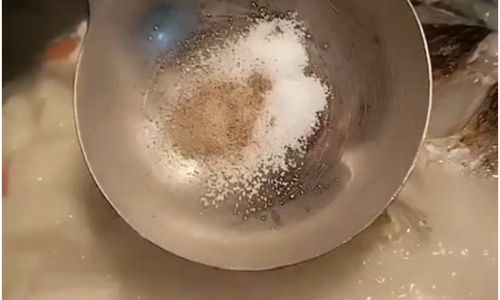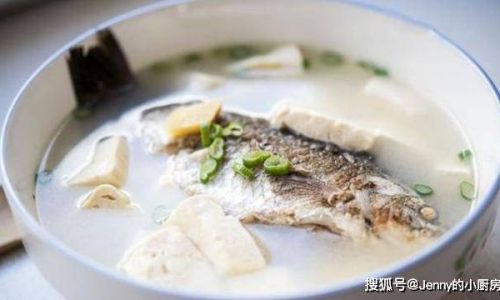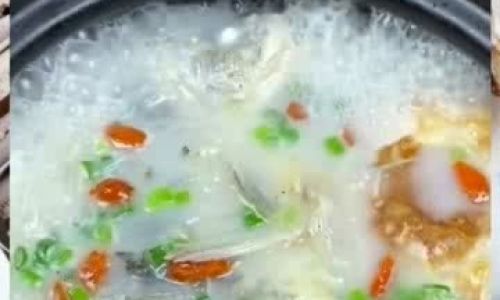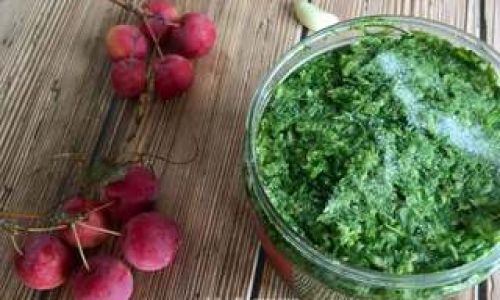Introduction

Carp soup, a timeless culinary delight enjoyed across various regions, embodies the essence of simplicity and richness combined. This dish, while seemingly straightforward, holds a depth of flavor that can captivate even the most discerning palate. The key to crafting a truly memorable carp soup lies not just in the ingredients but also in the meticulous attention to detail during preparation. In this comprehensive guide, we will delve into every aspect of making delicious carp soup, from selecting the perfect fish to the final seasoning touches that elevate it from good to extraordinary.
Section 1: Choosing the Right Carp
The foundation of any great carp soup starts with selecting a high-quality fish. Here are some crucial factors to consider:
1 Freshness
Freshness is paramount when it comes to fish. Look for carp with firm, moist flesh that springs back when pressed gently. The eyes should be clear and not cloudy, and the gills should be bright red. Avoid fish with a strong fishy odor, as this indicates it may not be fresh.
2 Size
Smaller to medium-sized carp generally have a finer texture and more delicate flavor compared to larger ones. Aim for carp that weigh between 1 and 2 kilograms for the best balance of flavor and texture.
3 Source
If possible, opt for carp caught in clean, cold waters. These fish tend to have fewer impurities and a purer taste. Reputable fishmongers or local farmers’ markets are often good sources for fresh, sustainably caught carp.

Section 2: Preparation and Cleaning
Proper preparation and cleaning of the carp are essential steps that cannot be overlooked. Here’s how to do it right:
1 Scaling and Gutting
Begin by scaling the fish using a fish scaler or the back of a knife. Be thorough to remove all scales, as they can make the soup gritty. Next, gut the fish carefully, removing the internal organs and any blood clots. Rinse the fish thoroughly under cold running water.
2 Filleting (Optional)
While some recipes call for using the whole carp, filleting can provide a more refined texture and reduce the risk of bones in the final soup. If filleting, use a sharp knife to cut along the backbone and ribcage, then remove the skin.
3 Removing Bones
If using whole carp or carp pieces, carefully remove any large bones using tweezers or your fingers. This step is crucial for a smooth, boneless soup experience.
Section 3: Gathering Ingredients and Tools

A well-stocked kitchen and the right ingredients are vital for making delicious carp soup. Here’s what you’ll need:
1 Ingredients
- Fresh carp (filleted or whole, as preferred)
- Leeks or onions (for flavor base)
- Carrots (for sweetness and color)
- Celery (for added depth)
- Garlic and ginger (for aroma and digestion)
- Fresh herbs (such as parsley, dill, or cilantro)
- Vegetable broth or water
- White wine (optional, for added complexity)
- Salt and pepper to taste
- Lemon juice or zest (for brightness)
2 Tools
- Large stockpot or Dutch oven
- Sharp knife for chopping and filleting
- Wooden spoon or ladle for stirring
- Strainer for skimming impurities
- Blender (optional, for a smoother texture)
Section 4: Cooking the Soup
Now, let’s dive into the cooking process. Follow these steps to create a flavorful, hearty carp soup:
1 Sautéing Aromatics
Start by heating a bit of olive oil in your stockpot over medium heat. Add chopped leeks, onions, carrots, celery, garlic, and ginger. Sauté until the vegetables are soft and fragrant, about 5-7 minutes. This creates a flavorful base for your soup.
2 Adding the Carp
Once the vegetables are sautéed, gently lay the carp pieces in the pot. If using fillets, you can add them later to avoid overcooking. Pour in enough vegetable broth or water to fully submerge the fish and vegetables. If desired, add a splash of white wine for an extra layer of flavor.

3 Simmering
Bring the mixture to a gentle boil, then reduce the heat to low. Allow the soup to simmer slowly, uncovered, for about 30-45 minutes. This slow cooking process allows all the flavors to meld together and the fish to release its juices, enriching the broth.
4 Skimming and Seasoning
Periodically skim off any foam or impurities that rise to the surface with a ladle or strainer. This keeps the soup clear and clean. After simmering, taste the broth and season with salt and pepper to taste. Remember, it’s easier to add more seasoning later than to overdo it initially.
5 Finishing Touches
For a smoother texture, you can use an immersion blender to blend part of the soup in the pot until it reaches your desired consistency. Alternatively, remove some of the soup, blend it, and then return it to the pot.
Add freshly squeezed lemon juice or zest for a bright, refreshing finish. Stir in chopped fresh herbs like parsley, dill, or cilantro just before serving to preserve their vibrant color and flavor.
Section 5: Serving and Enjoying
Serving delicious carp soup is an art form that should be celebrated. Here are some tips for presenting and enjoying your masterpiece:

1 Garnishing
Garnish each bowl of soup with additional fresh herbs, a slice of lemon, or a drizzle of olive oil. This not only enhances the visual appeal but also adds an extra layer of flavor.
2 Pairing
Carp soup pairs wonderfully with a variety of sides. Consider serving it with crusty bread for sopping up the broth, a simple green salad for freshness, or even a hearty grain like quinoa or barley for added texture and nutrition.
3 Enjoying the Moment
Finally, take a moment to appreciate the effort and care you’ve put into making this soup. Savor each bite, noting the subtle flavors and textures that make it unique. Share it with loved ones and enjoy the warmth and nourishment it brings to your table.
Conclusion
Making delicious carp soup is a rewarding culinary endeavor that combines precision, patience, and creativity. By following the steps outlined in this guide—from selecting the perfect fish to adding the finishing touches—you can create a dish that is not only nutritious but also deeply satisfying. Remember, the key to great carp soup lies in the balance of flavors and the attention to detail during each stage of preparation. With practice and a love for cooking, you’ll soon be crafting carp soups that are the envy of even the most seasoned chefs. So, gather your ingredients, roll up your sleeves, and embark on your journey to mastering the art of making delicious carp soup. Bon appétit!





0 comments